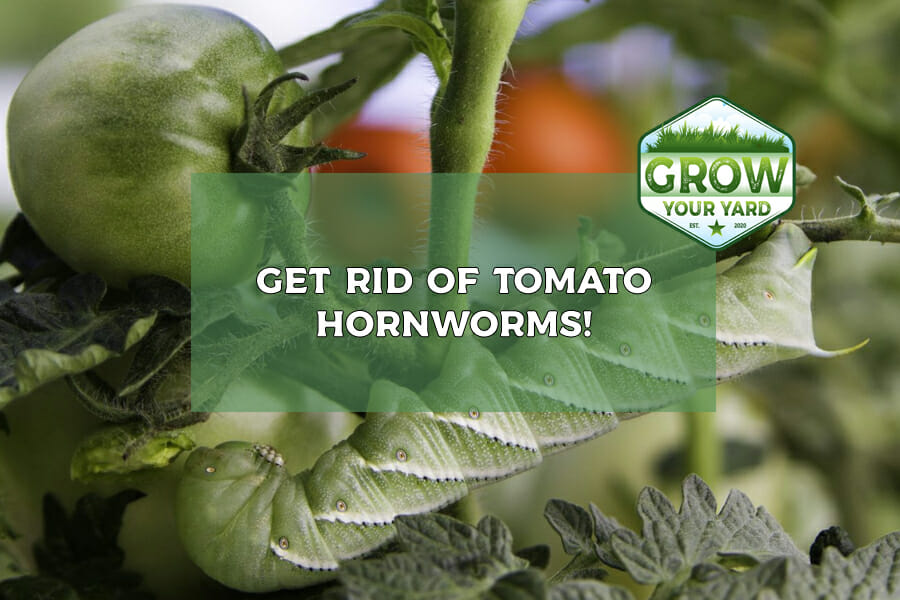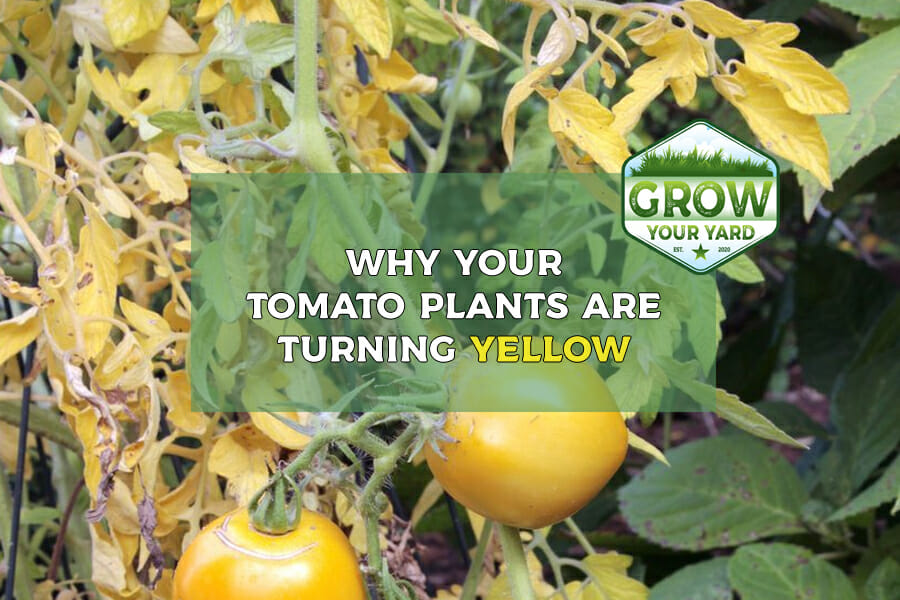Tomato hornworms are perhaps the biggest caterpillars around. With an appetite to match their size, these green creatures can defoliate and kill a tomato plant in days if you don’t get rid of them.
There are several ways to get rid of tomato hornworms, the simplest being handpicking. Other methods include organic and chemical insecticides and biological control with beneficial insects like ladybugs, lacewings, and wasps.
In this article, you’ll find detailed explanations for all the control methods mentioned, as well as ways to identify and prevent future infestations.
Eliminating Tomato Hornworm
You can use handpicking or organic, chemical, and biological methods to rid your garden of hornworms. A combination of the methods can also work to greater effect.
1. Handpicking
One of the simplest ways of controlling tomato hornworms is to handpick them. However, hornworms can blend in with the leaves, making it difficult to see and pick them. You’ll have to do the picking at night when the hornworms are active.
Alternatively, you can spray water on the plant. Doing so causes the caterpillar to trash, making it easier to spot. A UV lamp makes it easier to detect the worms at night. You can discard the worms by feeding them to chickens or other birds around, as hornworms are high protein meal for them.
The one downside to handpicking is that it has to be done regularly to be effective.
2. Biological Control
Biological control involves using natural enemies of the tomato hornworm to control its spread. Predators like ladybugs can eat up to 50 larvae a day, while green lacewings can eat 200 in one week, significantly reducing hornworm populations in your garden. Accordingly, grow plants like scented geraniums, dill, and angelica that attract ladybugs and lacewings to your garden.
Nearby wasp colonies also help control hornworm populations. Certain species like the Brachoid and Trichogramma lay eggs on hornworms, which will eventually hatch and feed on the worms, killing them in the process. Hornworms that have been so affected appear to be carrying rice grains on their backs. Do not kill such hornworms since the eggs will eventually hatch into more wasps to control any subsequent infestations.
Other wasps like the Japanese paper wasps feed on the larvae, notwithstanding how large it is.
One of several disadvantages of biological hornworm control is that ladybugs and lacewings are not effective against bigger caterpillars. Additionally, wasps can deliver painful stings if agitated, and their parasitic eggs take some time to work, and some foliage damage might occur in the meantime.
Despite these demerits, biological control is an environmentally friendly and reasonably effective way to eliminate hornworms.
3. Organic Control
Organic insecticides like Bacillus thuringiensis (Bt), Spinosad, or neem oil can effectively control tomato hornworms. They have the dual advantage of being readily available in gardening stores and bio-degradability. As such, they aren’t harmful to the environment or humans and animals.
Bacillus thuringiensis (Bt)
This insecticide is a naturally occurring bacteria that produce toxins that infect pests’ gut, causing them to die of infection and starvation.
The “Kurstaki” variant works best for tomato hornworm and other leaf-eating caterpillars like cabbage worms and cutworms. The bacteria are more effective on very young caterpillars.
Spinosad
Spinosad is derived from soil bacteria; it affects tomato hornworms’ nervous systems. It’s also potent against other pests like spider mites, ants, and mosquitos.
Neem Oil
Neem oil is an extract from neem trees. Unlike other insecticides, it doesn’t have kill-zones, meaning it will kill pests at any stage of their lifecycle. It also has anti-fungal and anti-bacterial properties.
4. Chemical Control
Hornworms rarely warrant the use of insecticides. In extreme cases, you may use Carbaryl or a broad spectrum pesticide like bifenthrin or cyfluthrin.
One application is enough, as the pesticides also affect beneficial insects. Take care to follow the label’s instructions, as some pesticides may be toxic to humans if you harvest the crop too soon.
Hornworm Infestation Signs
It might seem out of place, but effective control lies in quickly identifying hornworms as the defoliating pests.
Despite their size, it’s not incredibly easy to spot these creatures as their coloring allows them to blend in with the foliage. Additionally, the caterpillars are hardly out in the open in the day when you might see them while working in your garden.
Still, hornworms will leave signs of their presence, even if you don’t see the pests themselves. Here are some hornworm infestation signs to watch for.
- Chewed or missing top leaves
- Stems with missing and wilted leaves
- Chewed unripe fruit
- Dark green or black larvae droppings on the top leaves.
If you notice any or all these signs, look under the leaves, you’ll likely see a hornworm. And where there’s one, there’s a great chance that there are others about too.
Hornworm Prevention
Hornworms are persistent, their primary foods are solanaceous (nightshade) plants, particularly tomatoes, but they’ll feed on eggplant, pepper, and potatoes as well. Even after controlling an infestation, a garden still remains at risk, especially if you grow mostly solanaceous plants.
Thus, it’s best to take steps to prevent future infestations. Some preventive measures are detailed below.
Soil Tillage
Before becoming hornworms, these pests start off as brown pupae in the soil.
Tilling the soil in spring and the fall, which usually coincides with the start and end of the gardening season, can prevent an infestation by disrupting the pest’s lifecycle. Soil tillage involves turning over the soil, which exposes any pupae to be eaten up by predators or killed in the sun.
A downside of tilling is it also affects useful soil microbes that help the plants.
Intercropping
Growing other plants like borage, marigold, or basil with your tomato can help to prevent hornworms.
The pungent smell of marigold is an effective deterrent for the adult that lays the eggs that eventually turns into hornworms.
Borages and Basils attract wasps that feed and lay eggs on hornworms while at the same time deterring adult moths. Basils are also believed to enhance the flavor of tomatoes when grown together.
Other plants that can prevent tomato hornworms are; chamomile, buckwheat, wildflowers, and calendula.
Crop Rotation
By changing the plants you grow each planting season, you greatly reduce pests, especially when the rotated plants do not have similar pests. Crop rotation might not be as effective as other methods, but when done well, it can help prevent a hornworm invasion in the next planting season.
Trap Crops
Trap crops are planted to draw insect pests away from the main crop. An excellent trap crop for tomatoes is the herb dill. Planting some near your tomatoes will spare them from hornworms as the caterpillars prefer the herb to tomato plants.
Diatomaceous Earth
Diatomaceous Earth or DE is a naturally occurring, sedimentary rock crumbled in a fine white powder. Diatomaceous earth kills pests by absorbing the oils in their bodies. Additionally, the sharp edges also cause injuries to the insects.
DE doesn’t cost much, and it’s not harmful to the plants. However, it’s not effective in the rain, needing reapplication after every rainfall. Another downside is that it will also harm beneficial insects.
Floating Row Covers
These do as their name suggests, covering and preventing moths from laying eggs on the plant. You can take off the covers when it’s time for pollination.
Light Traps
Light traps capture moths by taking advantage of the insect’s obsession with light. Lamps are placed in the garden to attract the moths and trap them, thereby preventing them from laying eggs that will eventually turn into hornworms.
Light traps are not very effective, as you will need several lamps spread around the garden to eliminate the moths.
Soil Solarization
Soil solarization involves harnessing solar energy to combat tomato hornworm larva in the soil. A plastic tarp is used to cover the earth in the summer. The covering allows the soil temperature to rise to levels enough to kill bacteria, fungi, insects, and weed seeds.
Final Thoughts
If left unchecked, hornworms will completely defoliate a garden. It may be tricky to spot the green caterpillars among leaves at first; however, signs like chewed top leaves and dark green/black droppings are often an indication of a hornworm infestation.
You can eliminate the pests by handpicking. Organic pesticides and beneficial insects like ladybugs and wasps can also control hornworm, while intercropping, soil tillage and solarization, and crop rotation will prevent future infestations.
Sources
- University of Minnesota: Tomato hornworms in home gardens
- University of Maryland: Tobacco – Tomato Hornworm
- University of California: Hornworms
- University of Florida: Soil Solarization
- Gardentech: How to Prevent and Control Hornworms.
- Planet Neutral: Tomato Hornworm Control
- How to Control Tomato Hornworms
- 6 Ways to Control Tomato Hornworms
- National Pesticide Information Center: Bacillus thuringiensis (Bt).
- National Pesticide Information Center: Diatomaceous Earth




